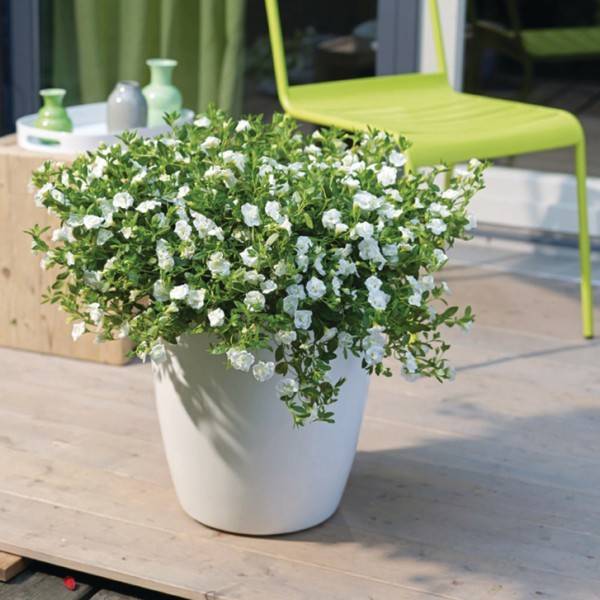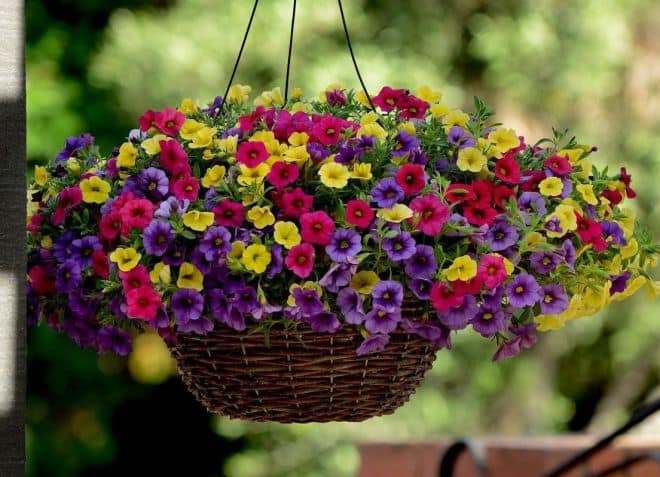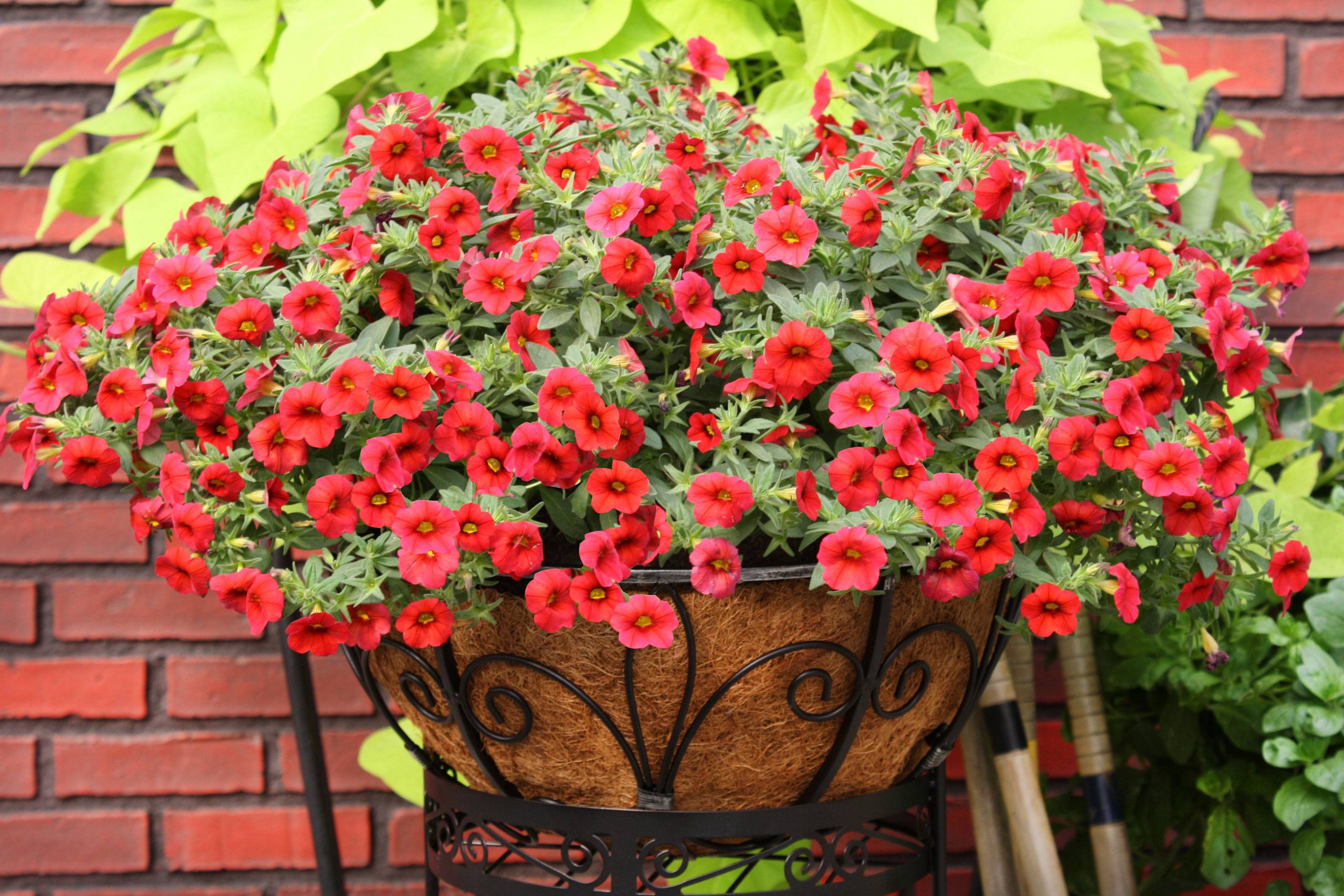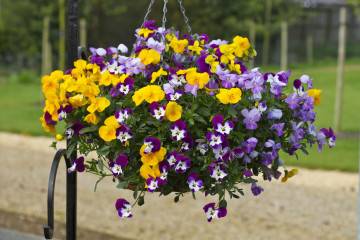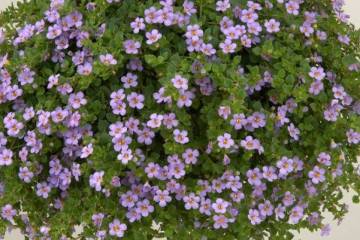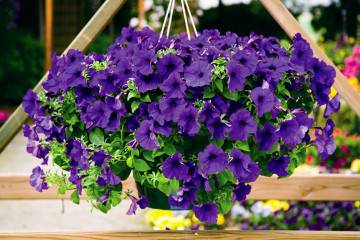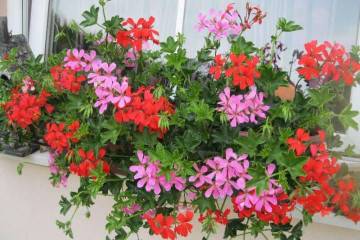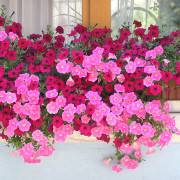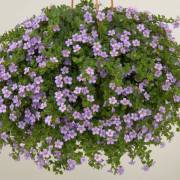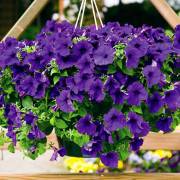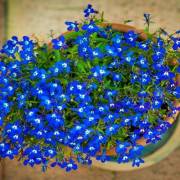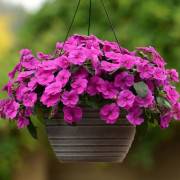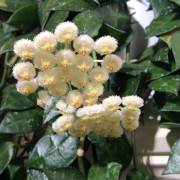Calibrachoa ampelous flower: description and care
Content:
A beautiful ampelous plant calibrachoa from the genus Solanaceae is a close relative of petunia. But unlike her, the flower has hanging stems, quite strong and lignified. It is important for beginner growers to understand how to properly organize the conditions for the growth of this beautiful plant.
Growing a flower calibrachoa ampelous
There are many varieties in the genus that grow well in different parts of the middle lane. Having created good conditions for maintenance, even a novice gardener in a few years will be able to get a real handsome bush.
Regardless of where it is planned to grow a flower (balcony or front garden), the selection of a place for further growth should be based on the quality of lighting. Bright light isn't the only thing that requires calibrachoa. A prerequisite for good crop growth is high-quality regular watering. With a sufficient amount of moisture, even bright direct sunlight does not pose a danger to the plant.
Flower shade is not desirable. It can cause a lack of flowering or a change in the color of the leaves. Having decided to grow an ampelous cabriochoma flower in a box near the wall, it is better to give preference to the south side. It is also important to consider some aspects:
- the normal development of a relative of petunia largely depends on heat and organized wind protection. Due to the fact that such conditions are difficult to fulfill in open ground, experienced growers prefer growing on a glazed loggia. This is where normal, appropriate care can be provided;
- in the process of caring for a plant at home (keeping in a pot), it is recommended to use artificial lighting and maintain an appropriate temperature level;
- protection from drafts and gusts of wind should be created to avoid breaking off the plant stems.
Calibrochia ampelous grows well on loggias or balconies. But in the open field it is capricious, requires special care and may not give the desired results.
Experienced flower growers point out that when planting calibrachoa in the ground, it is important to pay special attention to the preparation of the soil. One bush requires about 2 kg of land, used as the main source of nutrients. Every season, the soil mixture needs to be replaced or special fertilizing purchased in florist shops must be intensively introduced.
Calibrachoa likes abundant watering, but does not respond very well to soil overflow. A great solution is to regularly spray the plant with warm water. It is also necessary to supplement spraying with watering at the root. But not more often than 1 time in 7 days.
As an exotic plant, calibrachoa does not tolerate cold very well. Therefore, when grown outdoors, it is advisable to cover the flower. This is a rather fragile plant that can be damaged if a strong jet of water hits the leaves and stems. Prolonged downpours cause the calibrachoa to fall into a stupor and refuse to bloom.
Description of the flower
A calibrachoa bush can look like a ball, but only if it is formed correctly. With good care, many small flowers are formed on it. There are so many of them that it is difficult to count, due to which the plant got its name - "a million bells". Flower petals can be pink, blue, red, white, yellow. Plants of different colors look especially effective in hanging pots. "Million bells" are often used to decorate outdoor areas of summer cafes, terraces and balconies.
Growing calibrachoa from seeds
With the right approach, growing a calibrachoa flower at home from seeds is not difficult. The main condition is compliance with all the necessary landing points. Calibrachoa does not belong to overly whimsical flowers, but at a young age it is very vulnerable. It is during this period that the plant needs special care.
Experienced gardeners recommend increasing the germination of plant seeds with special preparations that stimulate development. Means can be purchased in stores or use a weak solution of potassium permanganate. It is recommended to keep the seeds in a prepared container with liquid for at least 24 hours. After that, the seeds are carefully laid out on a paper towel and allowed to dry.
Care of seedlings obtained from seeds
When planting seeds, the density of their distribution in the soil mixture is of great importance. In the process of growing seedlings of a plant, it is necessary to carefully monitor that the soil is moist. After the flower seeds are planted in the ground, a cling film or plastic bag is pulled over the box, and the container itself is placed on the windowsill.
Watering is carried out with warm water several times a day. Every week for a month, special liquid fertilizers must be introduced into the ground (preferably by spraying).
As soon as 3-4 leaves are formed on the sprouts, they can be taken out into the open space. An increase in the temperature outside to 20 degrees on an ongoing basis is a signal to transplant seedlings into open ground or a separate pot. Some gardeners leave sprouted plants in the box.
Outdoor and home care
Calibrachoa ampelous is a constantly flowering plant, so it is necessary to provide it with a nutrient mixture of the earth for development. A mixture of peat and compost is used with the addition of ordinary garden soil. To give a loose structure to the soil, it is recommended to add coarse sand. The acidity of the substrate is of no small importance. For this purpose, lime is added.
Features of caring for calibrachoa in winter
Some gardeners believe that calibrachoa is an annual plant. In fact, it can be kept in a cool room (+5 degrees) in winter, but with high humidity. The overwintered plant in spring is used for propagation by cuttings. It is also capable of blooming normally throughout the new season.
How to prevent diseases and pests
With improperly organized care of calibrachoa, there is a high risk of developing dangerous plant diseases, among which blackleg is an infection of fungal origin. To combat it, you need to use special drugs.
The use of ordinary garden land in growing can provoke the development of diseases such as root rot, chlorosis. Quite often, it is chlorosis that develops in indoor plants, characterized by a strong weakening of the leaves and a change in their color. To get rid of chlorosis, the flower is treated with iron chelate.
What is the difference between calibrachoa and petunia
Until the late 90s, calibrachoa was considered a variety of petunias.Only at the beginning of the 21st century, in the course of scientific research, it was established that these are different plants. Although they have much in common, it has been shown that petunias have fewer chromosomes than calibrachoa.
It is possible to grow a beautiful bush of calibrachoa only by providing it with adequate conditions of detention. It is important to shelter the flower from drafts and wind, not to let the earthy one dry out. It is noted that specimens grown in apartment conditions live longer and are more decorative.
